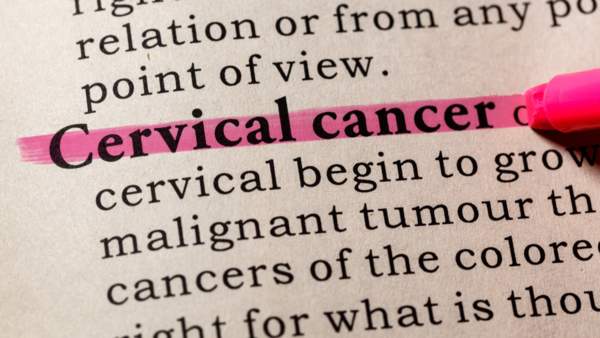Despite the common misconception that cervical cancer primarily affects younger women, medical experts stress the importance of awareness, screening, and prevention amongst women approaching menopause. As women age, the risk of developing cervical cancer can still persist, and many may not realize that they remain vulnerable even after menopause. Regular Pap smears, HPV testing, and consultations with healthcare providers are crucial for early detection and prevention, ensuring that women of all ages are empowered to protect their health. A retrospective study conducted by a Healthcare Provider during October 2015 to September 2016 analyzed the PAP smear data, which revealed a higher prevalence of premalignant and malignant lesions among postmenopausal women compared to premenopausal women.
According to the National Cancer Registry Program of India, approximately 123,907 women are diagnosed with cervical cancer annually. This highlights the importance for better awareness and early detection efforts, particularly among older women who may not recognize their risk.
Sharing insights on the same, Dr. Ashish Upadhyay, Consultant, Medical Oncology, Fortis Anandapur, Kolkata, says, “Cervical cancer can occur after menopause, and it’s critical for women to continue screening until the age of 65. Symptoms such as postmenopausal bleeding, postcoital bleeding, lower vaginal discharge, pelvic pain, and hematuria should prompt immediate medical consultation.”
Why are cervical cancer cases increasing in India?
In India, cervical cancer remains underdiagnosed, particularly among women over 40. Despite being a highly treatable cancer, many patients delay seeking medical help due to societal stigma and lack of awareness. Approximately 60-65% of cervical cancer patients in OPD consultations are over 40 years old, and sadly, a significant number are diagnosed at advanced stages.
Cervical cancer is a global health concern, with over 600,000 new cases reported annually. However, 80% of these cases occur in developing countries like India, while developed nations have seen a 75% decline in incidence over the last 50 years. This difference is due to developed countries having strong vaccination, screening, and early treatment programs, whereas India lacks a national program and suffers from low awareness. Many people are unaware that vaccination and screening options are available.
While the risk of cervical cancer can increase due to factors like smoking, alcohol consumption, and sexual activity. It’s essential to understand that even beyond the age of 65, any abnormal symptoms should be assessed by a gynecologist to rule out cervical cancer or other conditions.
Does cervical cancer risk remain even after menopause?
Dr. Sujata Dutta, Senior Consultant, Gynaecology, Fortis Hospital Anandapur, says, “Most cervical cancer patients visit us after menopause, but the disease does not start at that stage. It begins much earlier, typically between the ages of 15 and 25, as it is caused by the human papillomavirus (HPV), which spreads through sexual contact. The risk increases with an early onset of sexual activity or multiple sexual partners. While the immune system can often clear the virus, in some cases, it persists in the body. Over 10 to 25 years, this can lead to precancerous changes in the cervix, eventually developing into cervical cancer, usually between the ages of 50 and 60.”

How to prevent cervical cancer?
The introduction of the affordable HPV vaccine has opened new doors for prevention. HPV vaccination, especially for girls aged 9–26 years, can significantly reduce the incidence of cervical cancer. However, many women today, especially those above 40, were not vaccinated during their eligible years, contributing to a higher number of cases among older women.
Cervical cancer is a global health concern, with over 600,000 new cases reported annually. However, 80% of these cases occur in developing countries like India, while developed nations have seen a 75% decline in incidence over the last 50 years. This difference is due to developed countries having strong vaccination, screening, and early treatment programs, whereas India lacks a national program and suffers from low awareness. Many people are unaware that vaccination and screening options are available.
Despite the proven benefits of the HPV vaccination, awareness and uptake remain low in India. As part of global efforts to eliminate cervical cancer by 2030, the World Health Organization (WHO) introduced the 90-70-90 strategy. “The WHO’s strategy aims to vaccinate 90% of girls against HPV by the age of 15, screen 70% of women by the ages of 35 and 45, and ensure that 90% of diagnosed cases receive appropriate treatment,” explains Dr. Ashish. “By achieving these goals, we can significantly reduce cervical cancer as a global health burden.”
While HPV vaccination is crucial for younger women, for women over the age of 30-35, vaccination along with regular screening at specified intervals is equally important.
Regular screenings that remain crucial for early detection:
Ages 20-30: Pap smear every three years
Ages 30-65: Co-testing (Pap smear + HPV test) every five years
Prevention focuses on two key measures. The first is vaccination, which protects against HPV and should ideally be given before the first sexual contact, between the ages of 12 and 16. The second is regular screening for women aged 25 to 65 through PAP smears and HPV DNA tests every 3 to 5 years. These tests help detect precancerous changes early, allowing for timely treatment before cancer develops. Waiting for symptoms means the disease may have already progressed, though treatment options such as surgery and various therapies are available.
Is cervical cancer treatable?
Cervical cancer treatment is highly effective, with options ranging from surgery for early-stage cancer to radiation and brachytherapy for more advanced stages. Even in stage 4, some cases remain curable with prolonged treatment. By promoting awareness, early detection through screening, and vaccination, we can significantly reduce the impact of cervical cancer in India. It is not just a fight against cancer; it is a fight for women’s health and well-being.
Each consultation is an opportunity to educate women and their families about the importance of HPV vaccination and early screening. We must make every effort to spread awareness and reduce the stigma surrounding cervical cancer.


